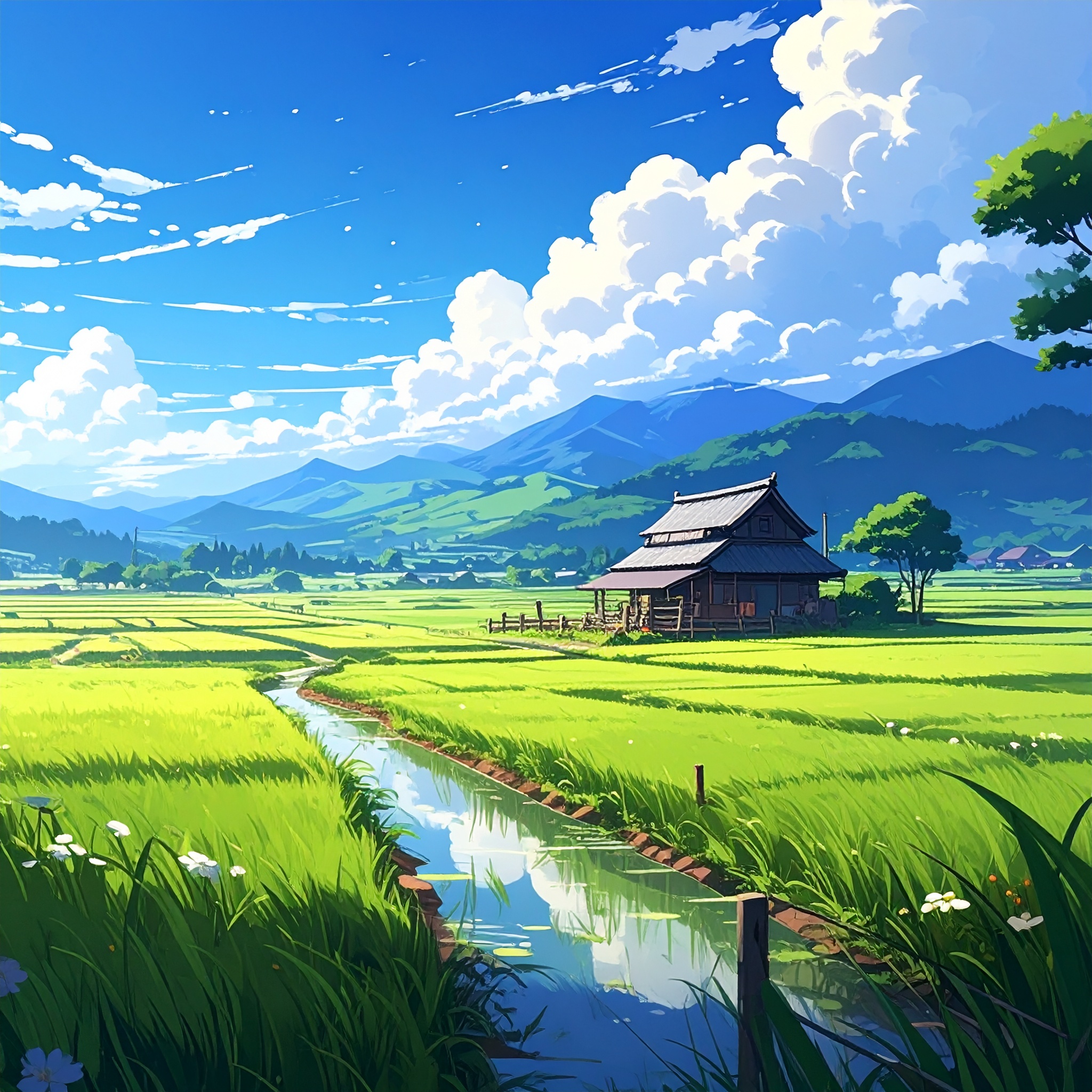Dew-kissed rice leaves sway in the morning breeze, and the quiet sound of footsteps presses gently into the soil. The rhythms of Japanese farming carry with them memories not only of the land, but of the body—patterns shaped over centuries of lived experience. Across Japan, rural culture endures not merely as a means of production, but as a deeply rooted way of life, embodying wisdom born from coexisting with nature. Within it live the memories of families and communities working together, attuned to the changing seasons and the quiet passage of time.
Japan’s rural life has long been synchronized with the rhythms of its natural surroundings—mountains, rivers, wind, and sunlight. Seeds are sown in spring, water flows into the paddies in summer, crops are harvested in autumn, and the soil rests in winter. This agricultural cycle is reflected not only in seasonal customs and festivals but also in the meals shared at the table. At its core is not a struggle against nature, but a dialogue—a way of life that grows in harmony with the land.
During rice planting, the entire village comes together to help, and during harvest, relatives and neighbors gather to work in joyful coordination. In these scenes of cooperation, agriculture stood at the heart of daily life. The casual conversations between tasks, the drums and songs that guide the work, the tea shared during breaks—these moments were naturally woven into the fabric of life.
The homes and tools found in farming villages are themselves records of culture. Structures like hasagake (wooden racks for drying rice), doma (earthen-floored rooms), and thatched roofs designed to shed rain reflect how living and farming were once inseparable. Each tool, often adjusted to suit the user’s body and needs, reflects thoughtful craftsmanship and was often passed down across generations.

Rural culture in Japan is also deeply intertwined with local language, food, and beliefs. Seasonal expressions, names of crops, methods of seasoning and preserving—all have evolved uniquely, adapting to the environment of each region. Agricultural wisdom has not only sustained daily life but has also shaped aesthetic sensibilities and values rooted in the land.
In recent years, however, much of this rural culture has slowly begun to fade. Depopulation, aging communities, and the modernization of technology have caused many traditional landscapes to vanish. Yet, at the same time, a quiet reevaluation of rural life has begun. There is growing recognition of the value of handcraft, the comfort of living in rhythm with the land, and the closeness of human relationships. These memories are beginning to be passed gently to the next generation.
Preserving rural areas as cultural heritage does not simply mean maintaining old scenery. It means recognizing and carrying forward a way of life shaped by wisdom for survival, pride in labor, and a sense of beauty rooted in harmony with nature. The challenge lies not in commodifying this lifestyle for tourism or market value, but in how we honor and transmit the way of living nurtured from within.
To listen to the sound of rice fields, to feel the seasons in the scent of the wind—through these senses, we reconnect with a history in which people and land were deeply intertwined. The culture of agriculture has quietly, yet firmly, supported the foundations of Japanese life. Its breath remains in the land. To carry it into the future, perhaps what we need most is to turn our gaze once more to these quiet memories.




